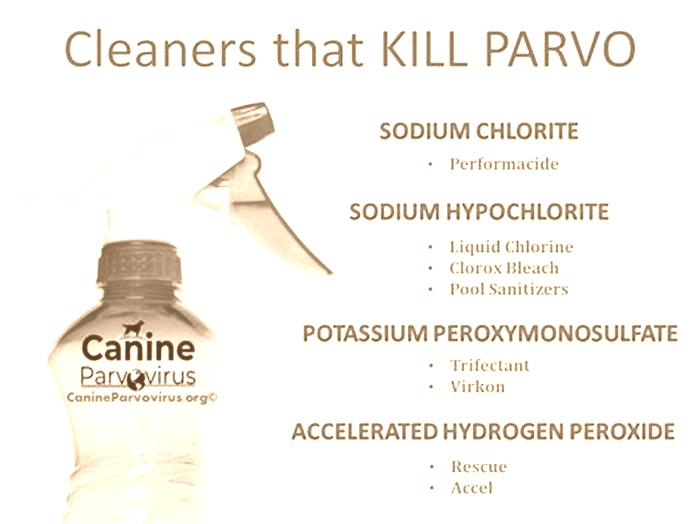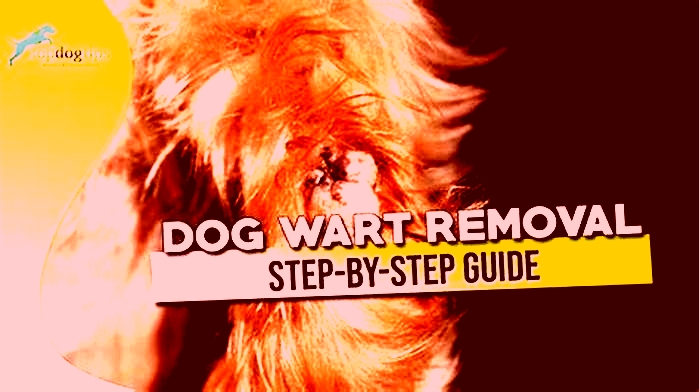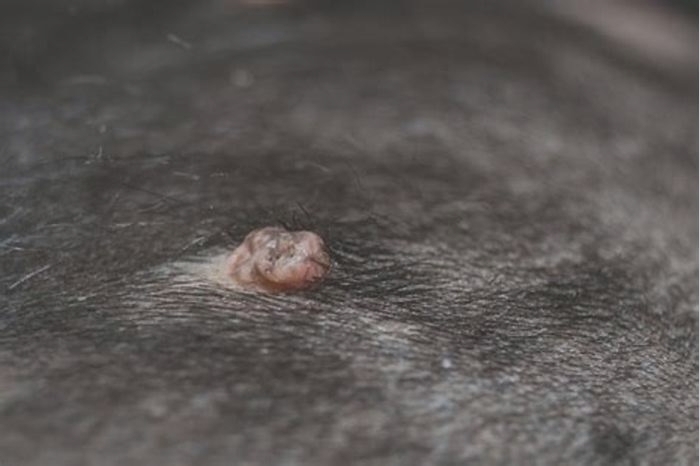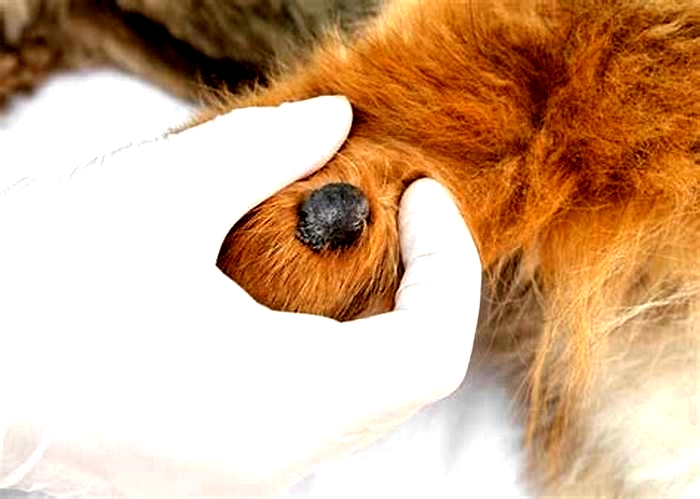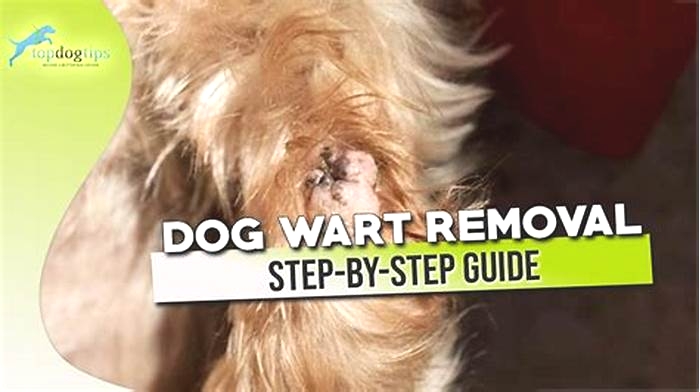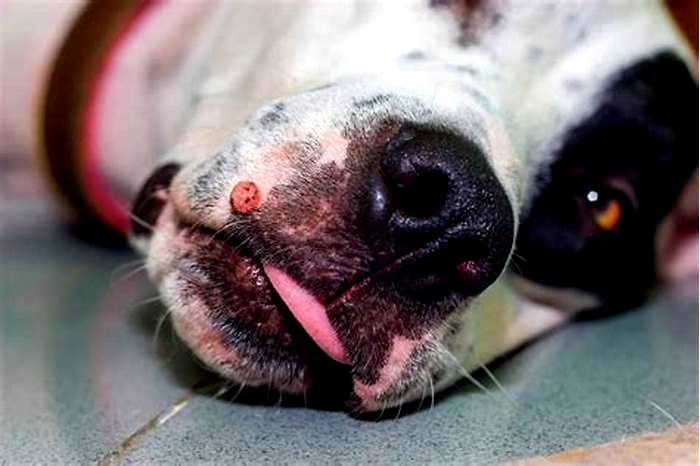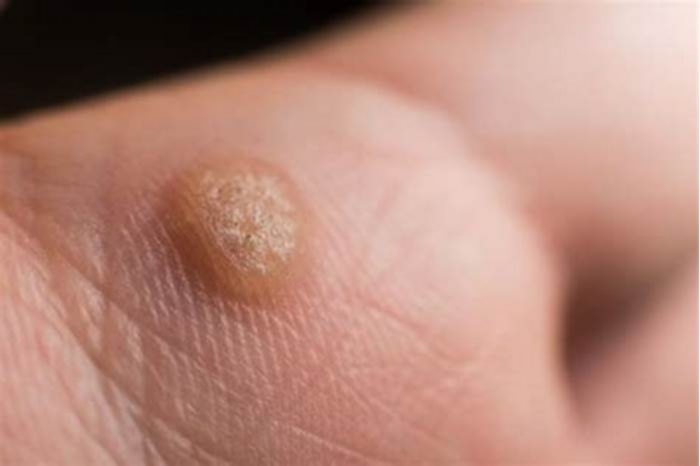What kills dog warts
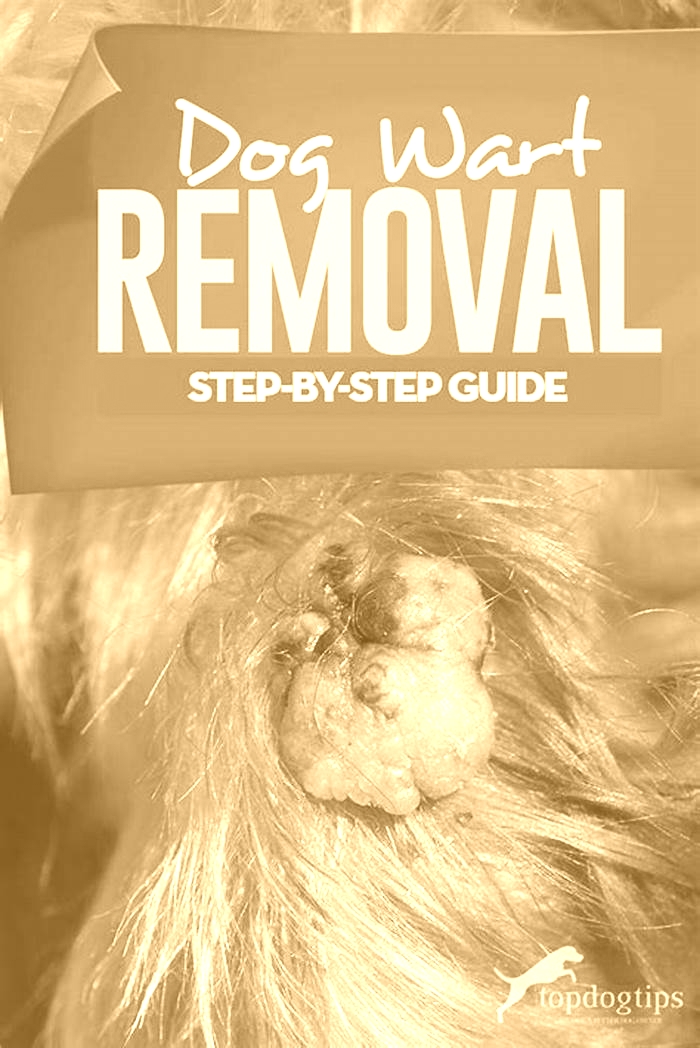
Understanding Dog Warts: Causes, Treatment & Veterinary Care
If youre a dog owner, you may have noticed your furry friend developing small, raised bumps on their skin, eyelid or inside their mouth. These may be warts, a common condition among dogs of all ages and breeds. While dog warts are generally harmless, its essential to understand their causes, available treatments, and the importance of seeking veterinary care.
Highlights- Dog warts are typically caused by the canine papillomavirus.
- Common breeds affected include schnauzers, spaniels, and pugs.
- Symptoms include small, rough, cauliflower-like growths.
- Treatments include cryotherapy, surgery, and medication.
- Prevent spread by avoiding contact and maintaining hygiene.
In this article, well provide a comprehensive understanding of dog warts and offer insights on managing your dogs health effectively. Well start by exploring the causes of warts on dogs, discussing their symptoms and appearance, and highlighting various treatment options available. Additionally, well focus on preventive measures to minimize the occurrence and spread of dog warts, keeping your furry friend healthy and happy.
The information provided herein is for informational purposes only. Please refer to our disclaimer for more details..
What Are Dog Warts and What Causes Them?

Image credit: Pixabay
If you notice small, raised growths on your dogs skin or inside their mouth, its possible that they have dog warts, also known as canine viral papilloma. These warts are typically caused by a virus known as the canine papillomavirus.
Dog warts can appear as single or multiple growths that resemble warts on humans. They often develop around the mouth, face, lips, and tongue but can also occur on other parts of the body. Canine papillomavirus is highly contagious and can be passed from one dog to another through direct contact or exposure to infected surfaces.
Canine papillomavirus affects mainly young dogs, as they have less developed immune systems, but it can also occur in older dogs. Common breeds that are predisposed to develop warts and oral papillomas include: miniature schnauzers, cocker spaniels and pugs.
If left untreated, dog warts can grow and spread, potentially leading to discomfort and even infection. Its important to seek veterinary care if you suspect your dog may have warts or any other skin condition.
Symptoms, Diagnosis, and Treatment for Dog Warts
Image credit: Mikhail Nilov
Recognizing the symptoms of dog warts is crucial in seeking prompt veterinary care. Warts appear as small, fleshy growths on the skin, usually with a rough, cauliflower-like texture. Common locations include the face, lips, and mouth, although they can appear anywhere on the body. Inside the mouth, warts can cause discomfort, excessive drooling, and difficulty eating or drinking.
Diagnosing warts involves a physical examination and your Veterinarian may also perform a biopsy to confirm the presence of the viral papilloma. Seeking proper veterinary treatment is essential, as untreated warts can become infected, inflamed, and painful.
There are several treatment options available for managing dog warts, including surgical removal, cryotherapy, and topical medications. In some cases, warts may regress on their own without intervention. It is important to note that viral warts can be contagious, and isolation of infected dogs may be necessary to prevent further spread.
Why is My Dog Suddenly Getting Warts?
Warts are common in dogs and any dog of any age group or breed may get warts. They appear as small raised bumps or cauliflower-like growths with a peduncle, dog of any age may get warts. However, young puppies, old dogs and immunocompromised patients are most commonly affected.
Warts develop due to a virus called canine papilloma virus that can affect other dogs. Papilloma virus enters the dogs skin through a break in dermis and proliferate quickly if the immune system is in a compromised state.
Should I worry If my Dog has Warts?
Dog warts usually are not a big cause for concern, if they are in small numbers and are not spreading. However, if there are complications like warts that gets popped or infected, or are in a location like eyelids and causing irritation and infection, you should contact your Veterinarian and get it resolved.
What kills Canine Papilloma Virus?
The treatment of papilloma in dogs involves a combination of therapies including cryotherapy, surgical excision of warts and use of topical and oral antiviral medication. Some medicines like Interferon and topical Imiquimod are used for treating warts in dogs.
This medicine works by activating Interferon alpha and T-cell mediated immunity in the dog and helps the body to fight the virus. Azithromycin has also been used in research trials and has given promising results in treating canine warts. You can learn more about it in this study.
How to Prevent the Spread of Canine Warts on Dogs?
As dog warts are contagious, preventive measures are crucial to minimize their occurrence and spread. This means avoiding direct contact with infected dogs or contaminated environments wherever possible. Its especially important to keep your dog away from dog parks or areas where dogs congregate in large groups.
If your dog has already been in contact with an infected dog, its important to watch for signs of the conditions onset. Warts are generally slow to develop, so catching them early means a better chance of effective treatment with minimal spread.
Its also essential to maintain good hygiene practices. Regularly clean and disinfect your dogs living spaces and common areas, such as their bed, toys and food bowls. Your dogs immune system is key to fighting off any viral infections, so ensuring they receive a balanced diet and adequate exercise is also important.
In summary, preventing dog warts involves keeping your dog away from infected dogs and maintaining a clean, hygienic environment. Although warts are relatively harmless, they can spread easily and become irritating for your dog. By taking preventive measures to reduce the risk of transmission, you can help keep your dog healthy and happy.
Conclusion
In conclusion, understanding dog warts is crucial for ensuring your furry friends optimal health. By familiarizing yourself with the causes, symptoms, and available treatment options, you can take proactive measures to manage this condition effectively. Whether you notice warts on your dogs skin or inside their mouth, its important to seek veterinary care promptly to diagnose and treat the condition.
Moreover, by adopting preventive measures such as avoiding contact with infected dogs in dog parks and keeping your dogs immune system strong, you can minimize the chances of warts occurring. In sum, through awareness and responsible pet ownership, you can provide your dog with the best possible care and keep them healthy and happy for years to come.
FAQ
How do dogs get warts?
Dogs can contract warts through direct contact with another dog who has the virus. The virus can enter the body through a break in the skin, typically during activities such as playing or interacting at a dog park.
Are dog warts contagious to other dogs or humans?
Yes, dog warts are contagious among dogs. It is important to keep your dog away from other dogs if they have warts to prevent the spread of the virus. However, dog warts cannot be transmitted to humans or other animals.
What do dog warts look like?
Dog warts typically resemble small, raised bumps that can appear anywhere on the dogs skin or inside their mouth. They may have a rough, cauliflower-like texture.
Do dog warts cause discomfort?
In most cases, dog warts do not cause any discomfort or pain. However, if the warts become infected or located in sensitive areas, such as around the eyes or mouth, they can cause some mild irritation.
Do dog warts require treatment?
In many cases, dog warts will regress on their own without any treatment. However, if the warts persist, are causing discomfort, or are located in problematic areas, veterinary treatment may be necessary to remove or treat the warts.
How can I prevent my dog from getting warts?
To prevent your dog from getting warts, it is important to minimize their contact with infected dogs or environments where the virus may be present. Avoid letting your dog interact with dogs who have visible warts or frequenting areas such as dog parks where contagious viruses can spread easily.
Are dog warts cancerous?
Dog warts are generally benign and not cancerous. However, if you notice any abnormal or concerning skin abnormalities on your dog, it is always best to consult with a veterinarian for proper diagnosis and treatment.
Can I remove my dogs warts at home?
It is not recommended to try removing your dogs warts at home. Improper removal methods can lead to infection or worsen the condition. It is best to consult with a veterinarian for appropriate and safe removal procedures.
Papilloma Virus in Dogs and Cats
Papilloma virus can affect dogs, cats, and humans. It is a virus that produces fairly benign disease, with the primary symptom being the development of growths (papillomas) on the body. In humans, the growths produced by the papilloma virus are commonly referred to as warts. The most common type of papilloma virus in dogs is CPV-1. Although other strains exist, the majority of dogs who contract papilloma virus are affected by the CPV-1 strain. Cats are less affected by papilloma virus and it is often associated with cancer, however, those felines who do come into contact with the virus are commonly affected by the FcaPV2 strain. Since the papilloma virus is fairly uncommon in cats, this article will focus on its effects on dogs.
How do dogs get Canine Papilloma Virus?
Canine Papilloma Virus can trigger the development of growths (papillomas) on many parts of the body. Viral growths can appear in the mouth, on the lips and tongue, on the skin, genitals, and eyelids. The most commonly affected area of the body for the development of papillomas is the mouth and associated structures.
Young dogs, less than 2 years old, are more commonly affected by CPV-1. This is due to the fact that their immune system isnt fully developed, which makes them more susceptible. Older dogs and dogs with compromised immune systems (due to cancer, immune-suppressive treatments, etc.) can also be affected but are at an overall lower risk.
The virus is highly contagious and is transmitted through direct contact such as greeting other dogs, from bedding, sharing toys, and eating/drinking out of the same bowls. Doggy daycare, other playgroup settings, dog parks, and community water bowls are the higher risk settings where transmission can occur. Papilloma virus is resistant to harsh conditions and can survive for long periods in the environment and outside the host. Fortunately, papilloma virus is host-specific, which means dogs cannot transmit the virus to humans and vice versa.
Papilloma virus enters the body either through soft, moistened skin or cuts and abrasions. The virus can also enter the body through tick, flea, and mosquito bites. Once a dog comes into contact with CPV-1, it can take one to two months to incubate. Usually, during the incubation period, no growths will develop, and the dog appears as their normal self.
After CPV-1 enters the body, it activates growth-promoting genes in the dogs DNA, while simultaneously deactivating/suppressing the genes that limit cell growth and altering genes that control cell death.
Symptoms of Papilloma Virus in Dogs
As stated earlier in this article, the oral papilloma virus is the most common type seen in dogs. Wart-like growths develop in and around the mouth at the corners of the mouth, on the lips, gums, and tongue. The papillomas can also develop on the chin, the upper palate, and at the back of the throat.
Papillomas often appear as multiple growths and can develop into clusters. They are usually round, pink, pinkish-red, or pale in color and have an irregular surface that resembles cauliflower or a cobblestone street. The growths can appear suddenly, sometimes overnight, and can go undetected (if not in a readily visible location) as the affected dog usually remains asymptomatic.
The vast majority of papilloma growths are benign and, only occasionally, lead to cancer. This doesnt mean that complications cant occur. Depending on the location of the papillomas, the dog can accidentally bite or chew on a growth, which can then cause bleeding and may lead to the development of secondary infection, oral swelling, or bad breath. If there are many growths clustered together, if they are larger in size or located in a more sensitive area of the mouth, the affected dog may experience difficulty grabbing or biting food with their mouth and teeth (prehension), difficulty chewing their food (mastication) or problems swallowing.
How is Canine Papilloma Virus diagnosed?
Canine Papilloma Virus is a medical condition that requires a visit to the vet. Many cases can be diagnosed by visualization and the appearance of wart-like growths.
Because of the possibility of papillomas developing into cancer (although lower risk), your vet may recommend testing, such as a fine-needle aspirate/biopsy (FNA), which is a fairly straightforward procedure. Cells are removed from the growth(s) using a needle and syringe. The cells are then transferred to microscope slides, which are sent to a pathologist for detailed analysis.
If any infected papillomas are detected at the time of exam by your vet, a course of antibiotics may be needed. You will want to make sure to prevent your dog from face rubbing or scratching at his/her face. An Elizabethan collar (cone collar) may be necessary until the condition has resolved.
Treatment Options for Dogs with Papilloma Virus Infection
Many dogs diagnosed with CPV-1 do not require treatment as the papillomas can disappear on their own, usually within 1 to 5 months. This self-limiting characteristic of the virus is due to the fact that as the young dogs immune system continues to mature it will develop antibodies to the virus, thereby causing the growths to regress and disappear altogether.
When a quicker fix is preferred, medical/surgical intervention would be the next best step. A minor surgical approach known as a crushing technique is a viable option. Anecdotal evidence has shown that if several of the papillomas are crushed using a surgical instrument called a hemostat this will stimulate the immune system and lead to the disappearance of the papillomas over the following several weeks. Whereas this technique is not a quick fix, it can trigger a faster response than no intervention at all. I have personally used the crushing technique on many of my patients with good results. Depending on the location of the growths, light to heavier sedation may be needed to properly perform the procedure. Whether or not this technique is an option for your dog depends on how many papillomas are present, their locations, and the recommendations of your vet after a thorough physical exam has been performed.
If the decision is made between you and your vet to proceed with surgical removal, this is a very good and quick treatment option. Surgical methods would include cryosurgery (freezing) or traditional surgery by excision using a scalpel. Surgical removal of every growth isnt always necessary. Evidence has shown, for some patients, the removal of some of the papillomas can stimulate the immune system to the point where the remaining growths would regress and disappear over time.
Other less commonly used treatment options include a type of vaccination, formulated using the actual growths themselves. Papilloma vaccination can be used for dogs experiencing severe symptoms such as the inability to swallow or difficulty breathing. The vaccination is in more of a research phase and not readily available. There is currently no vaccination to prevent CPV-1.
A drug called Interferon can be used as a treatment option, however, the drug is costly, and the results are mixed and inconsistent. A topical medication called Imiquimod has been more commonly used in humans but has recently become available for use in dogs. Imiquimod boosts the immune systems regulation of inflammation which, in turn, helps destroy the virus.
If you detect any growths on your dog, especially if located in or around the mouth area and you suspect CPV-1 but arent sure what to do next, follow the link below to schedule a webchat with one of our highly skilled nurses, who will then schedule a video consultation with one of our very experienced veterinarians. You can also download the FirstVet app from the Apple App or Google Play Stores.
Read more:
Lumps and Bumps on Dogs and Cats
Common Types of Skin Tumors in Dogs
Mast Cell Tumors in Dogs
Need to speak with a veterinarian regarding your dogs tumor, lump, or another condition?
Click here to schedule a video consult to speak to one of our vets. You can also download the FirstVet app from the Apple App Store and Google Play Stores.


